The best of ideas started as a simple notion of how to do something better or more efficiently.
When two individuals join their ideas collectively, sometimes it can result in something Big.
If those ideas come to fruition it can be paradigm shifting.
The NEW HEAD AND NECK MACHINE WILL CHANGE THE WAY WE LOOK AT CONCUSSION REDUCTION FOREVER.
www.concussionpreventionprotocol.com
Showing posts with label aging athlete. Show all posts
Showing posts with label aging athlete. Show all posts
Tuesday, October 30, 2012
Monday, June 13, 2011
Project Neck- The Female Study
Project Neck- The Female Study
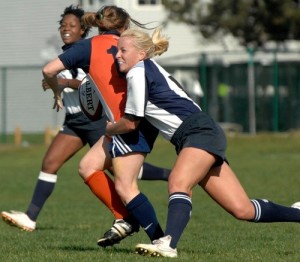 According to a study published in the Journal of Athletic Training in 2007, female high school athletes suffered almost 40 percent more concussions than males did. It estimated that female players suffer about 29,000 concussions annually with boys suffering 21,000.
According to a study published in the Journal of Athletic Training in 2007, female high school athletes suffered almost 40 percent more concussions than males did. It estimated that female players suffer about 29,000 concussions annually with boys suffering 21,000.

A new study to be published in the Journal of Athletic Training found that in high school soccer, girls sustained this type of head trauma 68 percent more often than boys. Female concussion rates in high school basketball were almost three times higher then boys and the girls took longer to return to play.
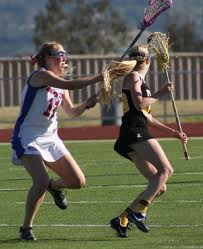
When there is an Epidemic in The United States we don’t just inoculate one section of the population we give the antidote to all that need it. In light of research and just common sense our female athletes need to be protected.
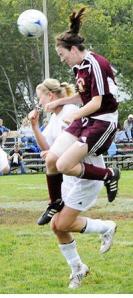
Because of physiological differences, women do not have to worry about getting ‘huge’ necks, but they can become very strong. The physics of kinetic energy dissipation applies to females as well as men. The female athlete can protect herself by strengthening the musculature around the cervical spine.
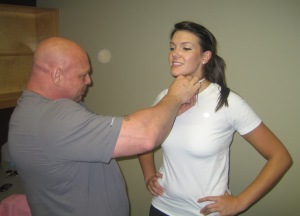
Their training is not dissimilar then the men who train theirs. They train the flexor, extensors and trapezius muscles that allow for increased neck stiffness and high performance moves on the playing field.

Project Neck- The female Study examines the changes both anatomically and morphologically, when resistance training is introduced.
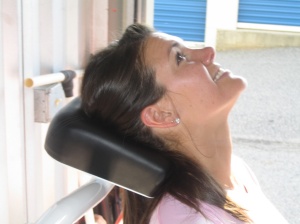
The female subjects will follow the same protocol of their male counterparts used in Project Neck earlier this year.
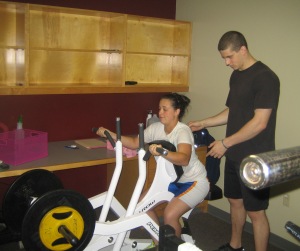
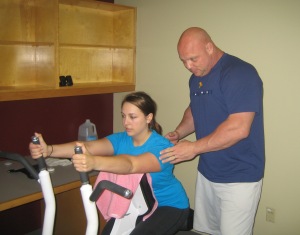
Females Can Get Strong
 According to a study published in the Journal of Athletic Training in 2007, female high school athletes suffered almost 40 percent more concussions than males did. It estimated that female players suffer about 29,000 concussions annually with boys suffering 21,000.
According to a study published in the Journal of Athletic Training in 2007, female high school athletes suffered almost 40 percent more concussions than males did. It estimated that female players suffer about 29,000 concussions annually with boys suffering 21,000.
A new study to be published in the Journal of Athletic Training found that in high school soccer, girls sustained this type of head trauma 68 percent more often than boys. Female concussion rates in high school basketball were almost three times higher then boys and the girls took longer to return to play.

When there is an Epidemic in The United States we don’t just inoculate one section of the population we give the antidote to all that need it. In light of research and just common sense our female athletes need to be protected.

Because of physiological differences, women do not have to worry about getting ‘huge’ necks, but they can become very strong. The physics of kinetic energy dissipation applies to females as well as men. The female athlete can protect herself by strengthening the musculature around the cervical spine.

Their training is not dissimilar then the men who train theirs. They train the flexor, extensors and trapezius muscles that allow for increased neck stiffness and high performance moves on the playing field.

Project Neck- The female Study examines the changes both anatomically and morphologically, when resistance training is introduced.

The female subjects will follow the same protocol of their male counterparts used in Project Neck earlier this year.


Females Can Get Strong
Labels:
aging athlete,
athlete,
athletic,
best,
brain,
concussion. project neck,
cornwell,
CTE,
female,
jaw,
neck,
project neck,
ralph,
strength and conditioning strong,
training.
Monday, January 24, 2011
Still Fast But A Lot Slower
Still Fast But A Lot Slower
Still Fast But A Lot Slower

If you look at men or women from the ages of 18-80 and examine the shortening velocity of their musculature you may be tremendously surprised to find that age has no effect on how quickly a muscle can change its length or V max.

With aging there is a decrease in maximal force and power due to the loss of muscle mass and not to the unloaded shortening velocity.
A loss of force and power makes it difficult in the ageing process to perform multi-joint movements, which eventually lead to a loss of mobility.
In future blogs we will explore what happens to muscle as a result of training and discuss the implications of a muscle’s ability to shorten at a fast rate which is unaffected over decades. The current information may change many coaches’ and athletes’ view of strength training.

Get Strong
 Photo Courtesy of Kathy Leistner
Photo Courtesy of Kathy Leistner
Subscribe to:
Posts (Atom)


